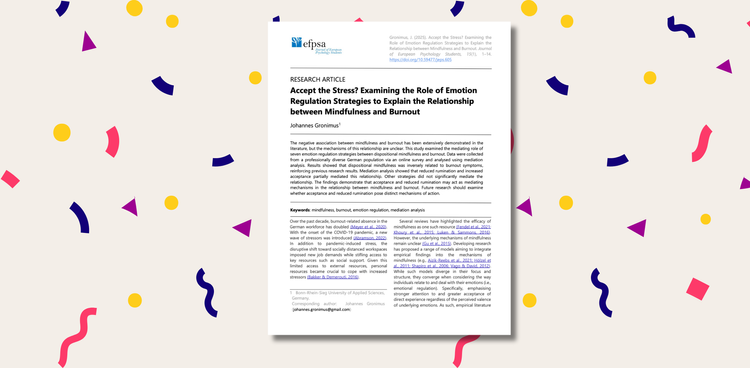Hedonic Adaptation

Getting a new car feels great. Especially for the first drive. The third drive is still pretty great, even if a little less than the first. On the twelfth drive, you might find some new feature that makes you very happy again. But by the 112th drive, it’s just the thing you're stuck in traffic with, isn’t it?
Now consider going to see your favourite artist at a concert. The lead-up feels great, the week before has a beacon of light to look forward to, the minutes before the show starts are thrilling - and then it’s gone. Two hours later, the show is over, and it will keep being over forever, but the experience remains amazing for the next week, the next year - Basically, as long as you don’t forget you went there, you’ll have a great memory.
So, what’s the difference here? To answer that, we quickly have to dive into how our senses work.
Perceptual Adaptation
If your bedroom has blackout curtains and you turn on the lights in the morning, they can seem like the brightest thing to ever exist. Wouldn’t it be annoying if every room you ever walked into caused you to squint your eyes and hate your life a little bit? Well, luckily your brain’s got you covered! In what’s called habituation, our mind will always find a way to adjust to a sustained stimulus and adjust to that new reference point. In other words:
If something sticks around, it becomes the new normal.
From an evolutionary standpoint, this adjustment is crucial to restoring sensitivity & notice changes in our environment to quickly react to threats. And today, it keeps us sane - imagine living in constant awe of the fact that there is a palm-sized block of minerals in your pocket that can send some electromagnetic radiation into space to make me talk to my mum 20,000kms away - I’d never get anything done!
Hedonic Adaptation
In the same breath, habituation makes you adapt to the pleasure of your awesome new car/phone/jewellery/… and it becomes the new normal. This is hedonic adaptation, and it works twofold:
- Over time: As seen with the car, the perceived value of a one-time purchase declines vastly over time¹
- With amount: While the first chain you buy is great, the second chain you buy is a little less great, as is the third - and so on. Behavioural Economics calls this diminishing marginal utility²
Sadly, my mind is pretty bad at predicting this habituation. From the current reference point, that new car, chain, shirt etc. seems like the key to increasing my well-being: “Once I have …, I’ll be happy!”.
And how happy I am - for about a day or two, until habituation kicks in and I want the next thing. And this doesn't even factor in comparison! While I might be perfectly happy with a shirt in a vacuum, that can deteriorate really quick when someone else gets a prettier one. Well, at least I’m not alone in my stupidity³.
So, how do I buy happiness then? Simple answer:
Invest in Experiences!
So-called experiential purchases, i.e., purchases that are less tangible & finite in time (like a concert, a vacation, a nice cup of coffee in a café, …) are almost immune to hedonic adaptation¹ - They simply don’t stick around long enough to get used to.
Applying this to our day-to-day is pretty easy. For each purchase I'm about to make, I ask myself - is this material or experiential?
And if it's material, I really have to question all the joy my brain is predicting. Taking into account the rapidly deteriorating value of these things, is it still worth it? And it might be - it just has to pass this extra step of questioning.
And if it's experiential, it's probably worth it. I haven't bought clothes in over 6 months and put all that money into concerts. I'm still warm & cozy every day - plus I have wonderful memories of my favourite artists. Score.
“Part of us believe that the new car is better because it lasts longer. But in fact, that’s the worst thing about the new car. It will stay around to disappoint you. But a trip to Europe is over. It evaporates. It has the good sense to go away, and leave you with nothing but your wonderful memory”— Dan Gilbert
PS: The concept of hedonic adaptation works in both directions - we adapt to bad things as we adapt to good things. However, we’re not really aware of this - hence the impact bias³ . But that’s a topic for another time.
PPS: Hedonic adaptation also plays a key role on why gratitude practice can have such remarkable effects on well-being. But that too is a topic for another time.
Links
1 Nicolao, L, Irwin, JR, Goodman, JK (2009), ‘Happiness for Sale: Do Experiential Purchases Make Consumers Happier than Material Purchases?’, Journal of Consumer Research, Vol. 36, No. 2, pp. 188–198, Oxford University Press, https://www.jstor.org/stable/10.1086/597049?seq=3
2 ScienceDirect, Diminishing Marginal Utility - an overview, https://www.sciencedirect.com/topics/psychology/diminishing-marginal-utility
3 Clear, J (2015), ‘How to Be Happy When Everything Goes Wrong’, James Clear, https://jamesclear.com/impact-bias




Comments ()